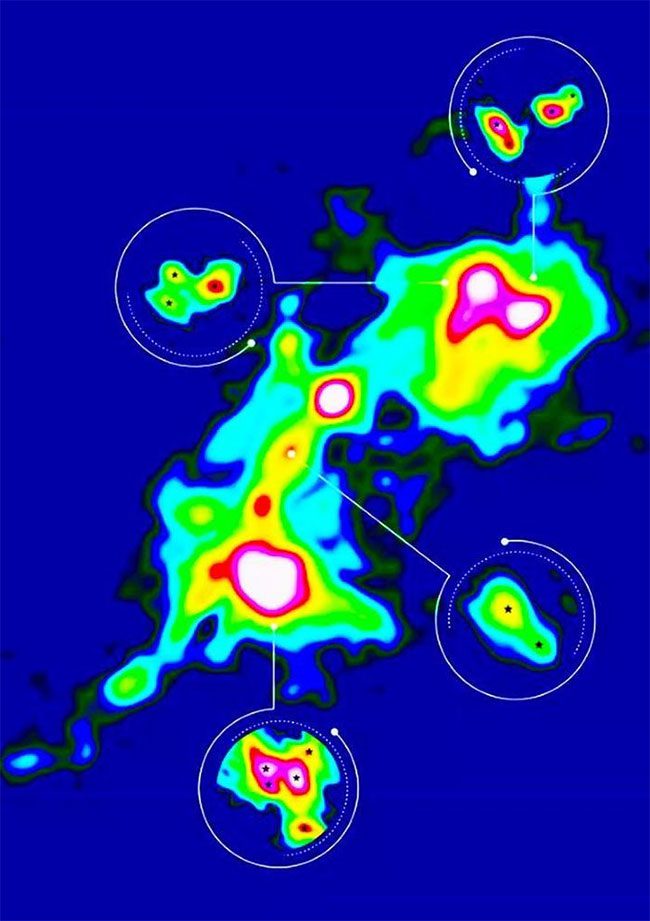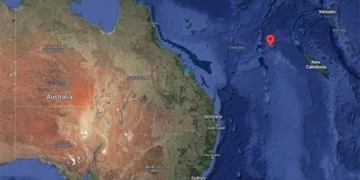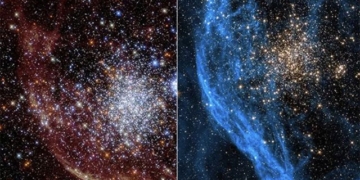Newly born giant stars are appearing in pairs, triples, quadruples, and even quintuplets, according to recently confirmed images.
Recently, the Atacama Large Millimeter/submillimeter Array (ALMA) in Chile conducted a survey of a newly discovered massive star cluster named G333.23-0.06, which contains many binary, ternary, quaternary, and quintuple star systems. This indicates that star pairs in the universe can be born and exist in certain multiples.
“Finally, we were able to examine the diversity of star systems in a massive star formation region like G333.23-0.06“, said Henrik Beuther, a co-author of the new study from the Max Planck Institute for Astronomy (MPIA) in Germany, in a statement.

ALMA has surveyed a newly discovered massive star cluster named G333.23-0.06, which hosts many binary, ternary, quaternary, and quintuple star systems. (Image: ALMA)
Beuther added: “What is particularly interesting is that the new observations provide evidence for specific scenarios regarding the formation of massive stars in multiples.”
All of these stars formed in massive molecular clouds containing hydrogen, but some stars have extremely large masses, approximately 200 times that of the Sun. The new images also support the theory of hierarchical massive star formation, yet do not clarify how such giant stars are formed.
Experts agree that the giant star pairs born in these multiples are formed through two specific mechanisms: disk fragmentation and core fragmentation. Generally, core fragmentation can explain how most massive stars give birth to triples, quadruples, and quintuplets, while disk fragmentation may play a role in the formation of binary star systems.
However, these remain hypotheses, and further in-depth studies are needed to resolve this special mechanism. The team of experts also indicates that beyond the distant universe, there are many other massive star formation regions similar to G333.23-0.06, so studying them will provide us with deeper insights into how massive stars form and evolve.


















































